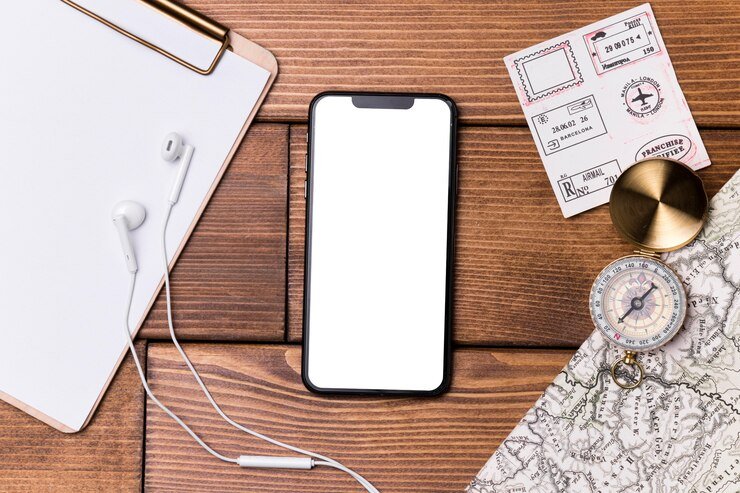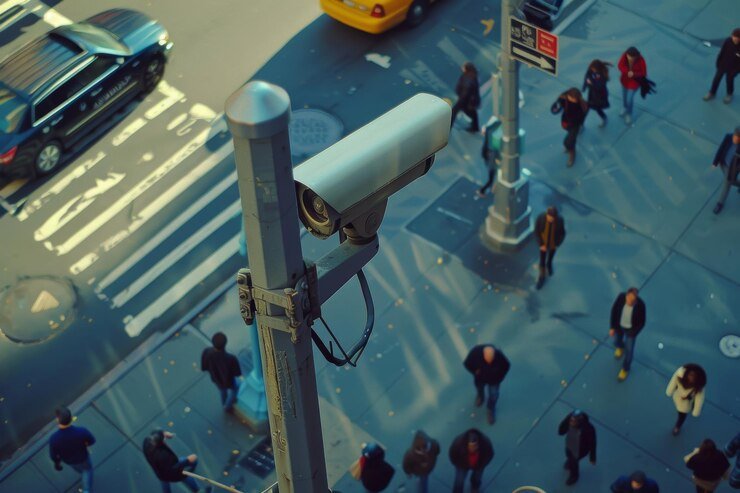
In today’s digital age, our smartphones are more than just devices; they’re lifelines connecting us to work, family, and entertainment. However, toggling Airplane Mode IPhone can sometimes feel like an unnecessary hurdle in staying connected. Let’s dive into what Airplane Mode really does and explore how you can easily navigate back to full connectivity when the time comes!
Understanding Airplane Mode
Airplane Mode is a feature designed to disable all wireless communications on your device. When activated, it turns off cellular data, Wi-Fi, and Bluetooth. This ensures that your phone won’t interfere with the aircraft’s navigation systems.
Although primarily intended for use during flights, Airplane Mode has other practical applications too. It can help you save battery life when you’re in an area with poor reception or when you want to minimize distractions.
Activating this mode gives you control over your connectivity without needing to toggle each setting individually. You can still access offline content like music or games while keeping notifications at bay.
Understanding Airplane Mode allows users to appreciate its versatility beyond just travel restrictions; it’s about managing how and when we connect with the world around us.
What is Airplane Mode?
Airplane Mode is a feature found on most smartphones, including iPhones. When activated, it disables all wireless communications on the device. This includes cellular service, Wi-Fi, and Bluetooth.
The primary purpose of Airplane Mode is to comply with airline regulations during flights. It prevents your phone from sending or receiving signals that could interfere with the aircraft’s communication systems.
Beyond air travel, this mode can be useful in various situations. For instance, you can save battery life by turning off background data usage while still allowing access to offline apps.
When enabled, notifications are silenced too, creating a distraction-free environment. Users can select which connections they want to turn back on after engaging Airplane Mode for convenience and control over their connectivity options.
Why Would You Want to Disable It?
Disabling Airplane Mode on your iPhone can open the floodgates to connectivity. Think about those moments when you need instant access to calls, texts, or data. Staying reachable is crucial in emergencies.
Sometimes, you might miss important notifications while in Airplane Mode. When you turn it off, you’re back in touch with friends and family. Plus, apps that rely on internet connections start to function again.
Traveling often means toggling between modes frequently. Once you’ve landed or are out of a secure area, disabling Airplane Mode ensures that your device reconnects automatically to networks without hassle.
Business meetings and social gatherings also call for seamless communication. Being disconnected may lead to missed opportunities or valuable information slipping through the cracks.
Why You Might Need to Disable Airplane Mode
Disabling airplane mode iPhone is essential for many everyday scenarios. If you’re at an airport or traveling, you might switch it off to reconnect with Wi-Fi or cellular networks. This allows you to stay updated and communicate as needed.
When attending a meeting or event, turning off airplane mode can help ensure you receive important calls and messages in real-time. Missing that crucial notification could impact your plans.
Additionally, if you’re trying to access apps that require internet connectivity—like navigation tools or streaming services—you’ll want to disable this feature. It’s all about staying connected when the situation demands it.
Moreover, disabling airplane mode lets your device sync data seamlessly with cloud services and apps needing constant updates, enhancing functionality without interruptions.
Benefits of Using Airplane Mode
Airplane mode offers several advantages that can enhance your iPhone experience. One of the most notable benefits is the ability to conserve battery life. When activated, it disables all wireless connections, helping your phone last longer during crucial moments.
Another perk includes minimizing distractions. With notifications turned off and connectivity halted, you can enjoy uninterrupted time for work or relaxation. This creates a focused environment where you can concentrate without constant pings or alerts.
Using airplane mode also allows for a faster charging process. Without the demand from apps trying to connect online, your device charges more efficiently.
Additionally, if you’re on an extended flight or in areas with poor reception, enabling this feature ensures compliance with airline regulations while still allowing access to downloaded content like movies and music. It’s about simplifying your digital life when needed.
Step-by-Step Guide to Disable Airplane Mode on iPhone
Disabling Airplane Mode on your iPhone is a quick and easy process.
First, unlock your device and look for the Control Center. On iPhones with Face ID, swipe down from the top-right corner of the screen. For models with a Home button, swipe up from the bottom edge.
Once in the Control Center, locate the airplane icon. If it’s highlighted or colored, that means Airplane Mode is active.
Simply tap on this icon to turn it off. You’ll notice that cellular signals will start appearing again at the top of your screen.
Alternatively, you can navigate to Settings by tapping its icon on your home screen. Find “Airplane Mode” on the list; toggling it off works just as efficiently.
After following these steps, you’ll be back online effortlessly!
Troubleshooting Tips if You Cannot Disable Airplane Mode
If you find yourself unable to disable Airplane Mode on your iPhone, try restarting your device. A simple reboot can often resolve temporary glitches.
Check for any software updates as well. Outdated software might cause unexpected issues with connectivity settings. Go to Settings > General > Software Update and see if anything is available.
Another step is resetting your network settings. This action won’t erase data but will restore Wi-Fi networks and passwords, cellular settings, and VPN configurations back to default. Navigate to Settings > General > Reset and select “Reset Network Settings.”
You could also try toggling the switch in Control Center multiple times. Sometimes a quick flick can do the trick when it seems stuck.
If these methods don’t work, consider reaching out to Apple Support or visiting an authorized service provider for more specialized assistance.
Tips and Tricks for Using Airplane Mode Effectively
Using airplane mode can be a game-changer for managing your iPhone usage. One effective trick is to activate it during meetings or social events. This way, you stay present without distractions from notifications.
Another handy tip is leveraging airplane mode while traveling. It saves battery life and prevents roaming charges when you’re in areas with poor reception. You can still access downloaded content like music or movies without interruptions.
If you’re trying to improve your sleep habits, consider turning on airplane mode at night. It reduces electromagnetic interference and helps create a serene environment for rest.
Combine airplane mode with Wi-Fi for uninterrupted streaming or browsing without cellular data use. This allows you to enjoy online activities while maximizing battery efficiency—smart multitasking at its finest!
The Impact of Airplane Mode on Battery Life
Airplane mode plays a significant role in conserving battery life on your iPhone. When activated, it disables all wireless communications, including cellular data, Wi-Fi, and Bluetooth.
This reduction in activity means less power consumption. Your device isn’t constantly searching for signals or syncing with networks. This can be especially beneficial during long flights or when you’re in an area with weak reception.
Moreover, using airplane mode while charging can speed up the process. With fewer functions running, your phone focuses solely on replenishing its battery.
However, it’s essential to remember that while airplane mode conserves energy effectively, some features will be unavailable until reactivated—like calls and texts. Balancing between connectivity and battery preservation is key to optimizing your device usage.
Frequently Asked Questions about Airplane Mode on iPhones
Airplane Mode can lead to many questions, especially for new iPhone users. One common query is whether it disables all connectivity. Yes, when activated, it turns off Wi-Fi, cellular data, and Bluetooth temporarily.
Many wonder if they can still access Wi-Fi while in Airplane Mode. The answer is yes! You just need to re-enable Wi-Fi manually after turning on Airplane Mode.
Another frequently asked question revolves around notifications. Even though your phone is in Airplane Mode, you will still receive notifications once you turn it back on.
People also ask about battery life concerns related to Airplane Mode. Interestingly, activating this mode can actually help conserve battery during flights or extended periods without charging options.
Some are curious about using GPS features while in this mode. Although location services remain active for certain apps like maps, the lack of internet connection may limit functionality.
Alternatives to Airplane Mode for Managing Phone Usage
If you’re looking to manage your phone usage without flipping on airplane mode, there are several alternatives worth exploring.
One effective option is using Do Not Disturb mode. This feature silences notifications while still allowing important calls or messages through, ensuring you’re not entirely disconnected.
You can also customize app notifications by going into settings and adjusting which apps can disturb you. Limiting distractions helps maintain focus throughout the day.
Another handy approach is utilizing Screen Time features available on your iPhone. Set limits for certain apps or track daily usage to develop healthier habits over time.
Consider turning off mobile data temporarily for specific applications that tend to draw your attention away from productive tasks. Managing connectivity this way offers a balanced solution while remaining reachable when needed.
Other Useful Features in Your iPhone’s Settings
Your iPhone’s settings are a treasure trove of features that go beyond just airplane mode. One handy option is Do Not Disturb, allowing you to silence notifications and calls during specific hours. It’s perfect for uninterrupted sleep or focused work time.
You can also customize your Control Center to access frequently used functions with ease. This lets you toggle settings like Wi-Fi, Bluetooth, and brightness without digging through multiple menus.
Another great feature is Screen Time, which helps monitor app usage and set limits on how long apps can be accessed daily. This makes it easier to manage digital wellbeing.
And don’t forget about location services! You have control over which apps can use your location data, enhancing both privacy and battery life. Exploring these options will help you tailor your iPhone experience even further.
Conclusion
Disabling Airplane Mode on your iPhone is a simple task that can quickly bring you back to full connectivity. Understanding the reasons for using and disabling this feature helps you use your device more effectively. Whether you’re traveling, trying to save battery life, or simply need access to calls and messages, knowing how to manage Airplane Mode gives you greater control over your phone usage.
Your iPhone is equipped with various tools and settings that enhance its functionality. Exploring these options not only improves your daily experience but also makes it easier to navigate situations where wireless connections are essential. So next time you find yourself in need of re-establishing a connection, remember the steps provided here and enjoy the seamless communication that follows.
RELATED POSTS
View all


